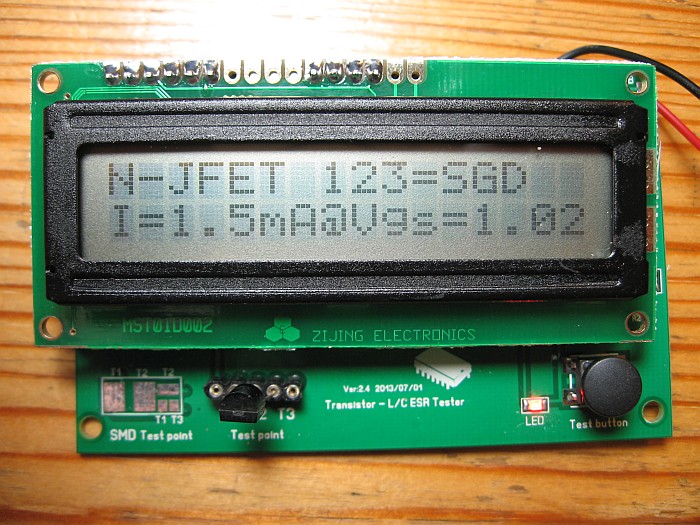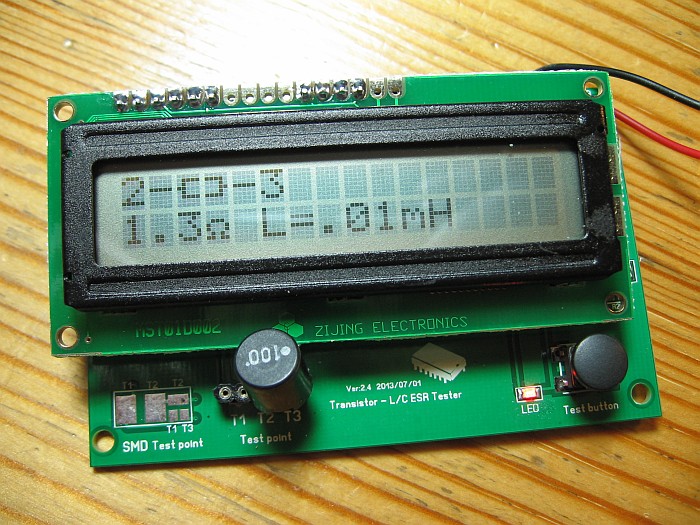A low-cost component and semiconductor tester from China
For less than 20,- Euro including shipping you get on Ebay for a little money a component and semiconductor tester. I have tested it.
I have received the component tester on http://www.ebay.de/itm/181127922416 . Three weeks after ordering I found the components tester in my mailbox.
So far I have tested the following components in order: bipolar transistors, junction field effect transistors (JFETs), diodes, LEDs, capacitors, electrolytic capacitors, resistors and inductors. The connections and the type of semiconductors are automatically recognized.
In coils sometimes the ohmic resistance as an indication of the goodness is displayed next to the inductor. The measuring method is not known. For capacitors, and especially the electrolytic capacitors (equivalent series resistance) is sometimes displayed in addition to capacity, the ESR.
The boundaries of the semiconductor tester I could not even fathom. So far I have found that germanium semiconductors are not recognized. He also had difficulty measuring tantalum electrolytic capacitors. In any case, these egg-laying Wollmichsau is worth the money.
The semiconductor tester, which is supplied without housing, needs a 9 volt block battery which is not supplied. Pushng one button turns on the tester. This is followed by a brief battery test. After a while, the device switches itself off again. The handling is in my opinion useful and thoughtful.
The display are largely self-explanatory, if the elementary basics of customer components are known:

A component is detected as a PNP transistor. B is the current gain factor. Uf is the threshold voltage between the base and collector. It is accordingly a silicon transistor.

An electrolytic capacitor of about 105 uF and an ESR of 0.15 Ohm.

An N JFET has been detected. For a source current of 1.5 mA fall between gate and source from 1.02 volts.

Measuring a fixed inductor.

A silicon diode was detected. For larger rectifier diodes have a value for the junction capacitance appears.

A resistor of 100 ohms.

A red LED indicates as would be expected, a threshold voltage of about 2 volts. When measuring the LED will flash briefly on the way.
Further experiments with this Component Tester will follow. This is because of the lack of specifications and tolerance information is not to gauge. Nevertheless, the measurement accuracy is more than sufficient for repair use for developing your own circuits as they come, for example, for use in amateur radio. 25 years ago this little device would be an absolute sensation.
